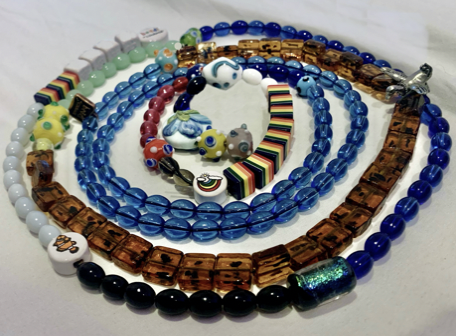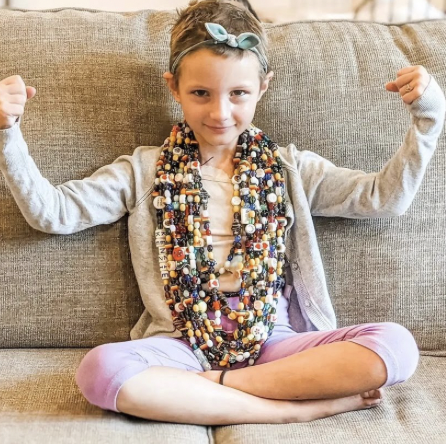Narrative Medicine Through Beads of Courage
Narrative medicine is used worldwide to help people struggling with health challenges. It uses people’s narratives in a clinical setting as a way to encourage healing and validate the experience of the patient.
Beads of Courage is a United States based nonprofit organization that serves children and teenagers with serious health conditions. Beads of Courage uses a narrative medicine technique to give patients a way to represent different medical treatments and experiences with beads. Symbolizing their experience, is a way of telling their medical life story, which has a validating effect.

According to Humanity before Science: Narrative Medicine, Clinical Practice, and Medical Education, “The cut-and-paste functions of electronic medical records undermine the psychological and therapeutic value of face-to-face personal and compassionate encounters between physicians and their patients.”
Beads of Courage aims to solve this problem through the seven different programs it offers: oncology, hematology, cardiac, burn, and chronic conditions. Each program has individual colors of beads representing children’s experiences in treatment.
Each bead of courage represents a medical procedure or process, with values assigned to major and minor procedures. Examples include: Doctors appointments as dark blue beads, tests and scans as light green, new medications as white beads, days inpatient as yellow beads, and any type of therapy as rainbow beads.
Strung together, the necklace tells the story of the person’s medical journey in a visual way. This story-telling through beads helps connect physicians to their patient’s psychological journey, which is affirming for the patient and inspires compassion in the physician. According to Bead s of Courage, “Every time a bead is given courage is honored, suffering is alleviated, resilience is strengthened, and the experience of human caring is affirmed.”

Source: Emily White
Kenzie is a great example of how narrative medicine helps patients to visualize and therefore validate their experience. She was diagnosed with Stage 4 Neuroblastoma in 2020 and has since earned over 1800 beads, each representing a step in her cancer journey. Kenzie’s mother, Emily, has said, “It’s really meaningful to me to be able to look at that and see everything she has overcome … if it can do it for us it can do it for anybody.”
While Kenzie is still too young to understand the meaning of the beads her mom is hopeful that in the future it will help her visualize her bravery throughout all the treatment she has undergone. Kenzie still has a lot of courage to find ahead of her, but she is brave and her mom wants her to be able to see what she accomplished!
Lily’s story helps us to see how narrative medicine directly helped her deal with mental health problems that arose as a result of treatment. Lily is a chronically ill teen living in New York, and she has been documenting her treatment over the past year. Throughout her treatment, she has earned almost 250 beads. Lily was dealing a lot with the mental health side effects of treatment, including imposter syndrome, which led her to join the beads of courage chronic conditions program.
She felt like she wasn’t sick enough to be worth the extra accommodations she needed. Seeing the string of 250 beads helped her to resolve her feelings of “imposter syndrome,” and feel more justified in seeking her accommodations. The program helped her validate her illness and show her that it was not a weakness but a strength. Lily said, “My beads made such a difference in my life and they have also been able to help my friends and family understand all that I have overcome.”
While Beads of Courage is just one organization that uses narrative medicine to improve healthcare outcomes, it powerfully illustrates how a simple process of allowing a person to see and show the truth of their painful experience–to tell their story–brings about positive change. It is great for the patients, their families, and their physicians.